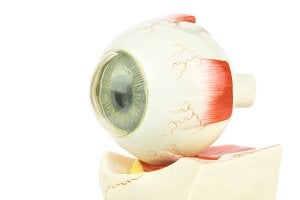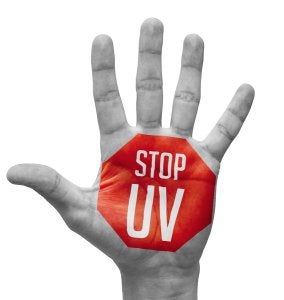-
Detecting Glaucoma
An eye doctor in Chicago can look for indicators of glaucoma during a comprehensive dilated eye exam. First, the ophthalmologist will apply special eye drops to each of your eyes. You’ll need to wait a few minutes for the drops to dilate your pupils, or enlarge them. When the pupils are dilated, the ophthalmologist can clearly see the optic nerve, macula, and retina. He or she will look for changes that can indicate glaucoma , such as changes in the shape or color of the optic nerve, or cupping of the optic disc.
To hear more about making a dilated eye exam part of your eye care routine, watch this video. You’ll see an animation that demonstrates how this exam is performed and what changes can occur when a patient has glaucoma. This video also discusses some of the risk factors associated with glaucoma and offers recommendations regarding how often patients should have a dilated eye exam.
-
The Causes and Symptoms of Cataracts
 Many people underestimate the importance of having regular examinations at an optical center in Chicago. This is unfortunate because an ophthalmologist can do much more than provide an accurate prescription for corrective lenses. An ophthalmologist can also look for the early warning signs of vision problems such as cataracts, which refer to cloudiness on the lens of the eye. Cataracts are among the most common causes of vision impairment. If you’ve already been diagnosed with cataracts, you can talk to an ophthalmologist about cataract treatment .
Many people underestimate the importance of having regular examinations at an optical center in Chicago. This is unfortunate because an ophthalmologist can do much more than provide an accurate prescription for corrective lenses. An ophthalmologist can also look for the early warning signs of vision problems such as cataracts, which refer to cloudiness on the lens of the eye. Cataracts are among the most common causes of vision impairment. If you’ve already been diagnosed with cataracts, you can talk to an ophthalmologist about cataract treatment .Symptoms
You may not necessarily notice symptoms of cataracts until they have progressed. Cataracts develop slowly over time. As they develop, you might begin to notice symptoms such as foggy, filmy, blurry, or cloudy vision. Double vision, progressive nearsightedness, and difficulty coping with glare during the day are other indicators of cataracts. You may also have difficulty with glare at night, such as glare from the headlights of oncoming vehicles. You might suddenly need a stronger prescription for your corrective lenses and you may notice that you begin to perceive colors differently.
Causes
Cataracts develop when the lens of the eye develops an accumulation of proteins. These proteins cause the cloudiness that prevents the lens from properly focusing light on the retina, which is the back of the eye. This causes vision impairment. There are different underlying causes that may contribute to the accumulation of proteins. Ophthalmologists classify different types of cataracts according to their underlying causes.
Types
For example, a patient might be diagnosed with an age-related cataract, which occurs as a result of changes during the aging process. Cataracts are quite common among adults aged 65 and older. However, it is possible for babies to be diagnosed with congenital cataracts, which are present at birth. Congenital cataracts can develop as a result of poor fetal development, or an injury or infection that affected the fetus. Some people are diagnosed with traumatic cataracts. As the name implies, these develop after an eye injury. Secondary cataracts are caused by certain medical conditions. These can include diabetes, exposure to ultraviolet light, exposure to radiation, or exposure to toxic substances. Some medications can also cause secondary cataracts, including diuretics and corticosteroids.
-
An Overview of Diabetic Retinopathy
 For patients who have diabetes, visiting an ophthalmologist near Chicago for regular exams is particularly important. This is because diabetes places patients at risk of many serious complications, including diabetic retinopathy. Diabetic retinopathy is characterized by damage to the tiny blood vessels located in the retina. When a patient is in the early stages of diabetic retinopathy, an ophthalmologist will see very small areas of swelling in the blood vessels, which is subsequently followed by blockage of some of the blood vessels.
For patients who have diabetes, visiting an ophthalmologist near Chicago for regular exams is particularly important. This is because diabetes places patients at risk of many serious complications, including diabetic retinopathy. Diabetic retinopathy is characterized by damage to the tiny blood vessels located in the retina. When a patient is in the early stages of diabetic retinopathy, an ophthalmologist will see very small areas of swelling in the blood vessels, which is subsequently followed by blockage of some of the blood vessels.As the disease progresses, additional blood vessels develop blockages, which means the retina no longer receives enough blood. Subsequently, the retina instructs the brain to grow new blood vessels, which is known as proliferative retinopathy. Unfortunately, these new blood vessels are quite fragile and can leak blood. As a result, vision loss occurs. Vision loss caused by diabetic retinopathy can also occur when fluid leaks into the macula, causing vision to become blurry. Individuals with diabetes should visit an optical center to have a dilated eye exam at least once per year. An ophthalmologist can provide early treatment for diabetic retinopathy, which may help prevent vision loss.
-
How UV Radiation Affects Your Eyes
 In recognition of UV Awareness Month this May, take a few minutes to learn about the damaging effects of ultraviolet radiation on your eye health. Excessive exposure to sunlight can cause both short-term and long-term problems, which is why a critical part of your eye care routine should be to wear UV-blocking sunglasses outdoors. If you wear corrective lenses, you can talk to your ophthalmologist near Chicago about getting prescription sunglasses. Your ophthalmologist can also give you some tips for preventing damage due to UV exposure.
In recognition of UV Awareness Month this May, take a few minutes to learn about the damaging effects of ultraviolet radiation on your eye health. Excessive exposure to sunlight can cause both short-term and long-term problems, which is why a critical part of your eye care routine should be to wear UV-blocking sunglasses outdoors. If you wear corrective lenses, you can talk to your ophthalmologist near Chicago about getting prescription sunglasses. Your ophthalmologist can also give you some tips for preventing damage due to UV exposure.Photokeratitis
Photokeratitis is one of the short-term problems that can occur with excessive UV exposure. This condition is often compared to being similar to sunburn of the eyes. The symptoms of photokeratitis can include a gritty feeling in the eyes, excessive tearing, red eyes, and sensitivity to light. Usually, photokeratitis is temporary.
Growths
Individuals who spend a great deal of time outdoors without proper protection for their eyes may develop growths on the eye. An ophthalmologist will diagnose a patient with pinguecula if he or she has a bump or patch near the cornea. This patch appears yellowish. It develops due to tissue changes, such as the accumulation of calcium, fat, and protein. It is believed that this growth is linked to excessive UV exposure. Often, individuals with pinguecula will develop a pterygium, which is fleshy tissue that begins to develop on the white of the eye and can gradually spread to the cornea. A pterygium can become large enough to cause vision impairment.
Cataracts
With excessive UV exposure, individuals may have a higher risk of developing cataracts . Cataracts are areas of cloudiness on the lens of the eye. They interfere with the ability of the lens to focus light on the retina properly. Subsequently, vision becomes dim, blurry, or cloudy. Cataracts gradually become worse over time. By visiting an ophthalmologist for annual eye exams, patients can facilitate the early detection of cataracts. Fortunately, this serious vision problem is treatable with cataract surgery.
-
How Are Cataracts Diagnosed?
 A cataract surgeon serving Chicago can conduct a comprehensive eye examination to diagnose cataracts . First, the cataract surgeon will review your medical history and ask you about your symptoms. You can expect to have a refraction and visual acuity test, during which you’ll be asked to cover one eye, then the other, while reading rows of letters of various sizes. The ophthalmologist will likely perform a slit-lamp exam, which enables him or her to assess your corneas, iris, and lens. The slit-lamp exam allows your ophthalmologist to look for very small abnormalities in these structures.
A cataract surgeon serving Chicago can conduct a comprehensive eye examination to diagnose cataracts . First, the cataract surgeon will review your medical history and ask you about your symptoms. You can expect to have a refraction and visual acuity test, during which you’ll be asked to cover one eye, then the other, while reading rows of letters of various sizes. The ophthalmologist will likely perform a slit-lamp exam, which enables him or her to assess your corneas, iris, and lens. The slit-lamp exam allows your ophthalmologist to look for very small abnormalities in these structures.Another test for the diagnosis of cataracts is a retinal examination. Your ophthalmologist will administer special eye drops to each eye. These eye drops will dilate your pupils, or make them larger, which allows the eye doctor to evaluate your retina. You’ll need to wait for a few minutes for the eye drops to work. Then, your ophthalmologist will use a slit-lamp or an ophthalmoscope to check for signs of a cataract.
